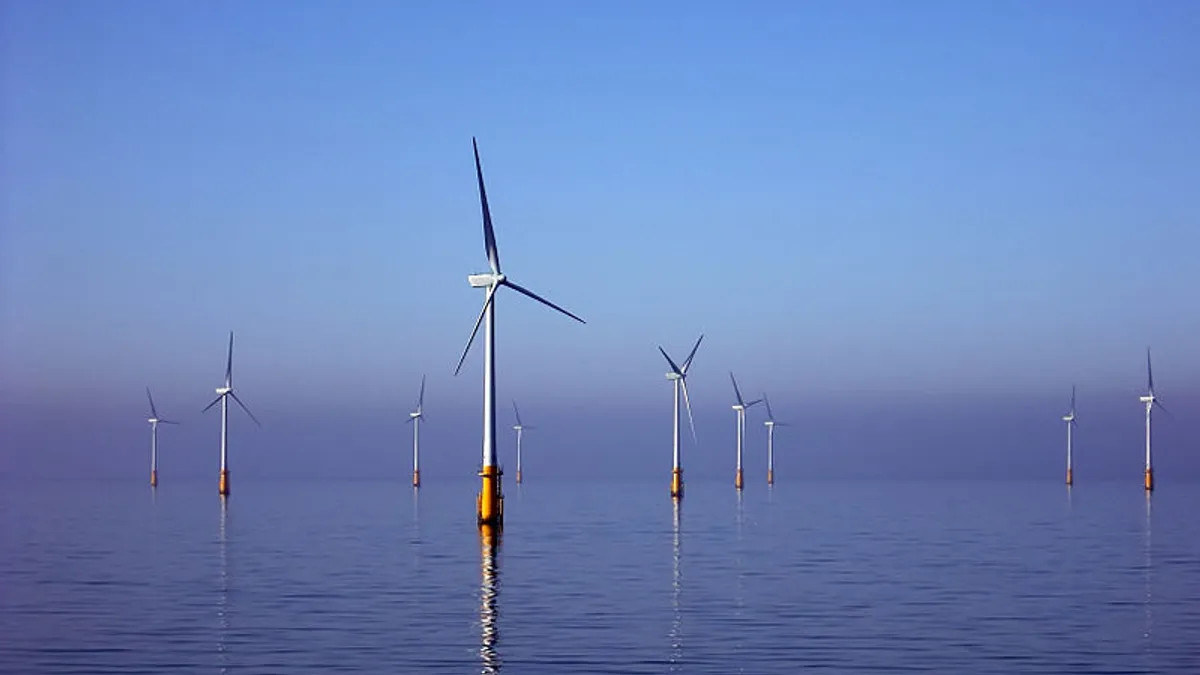Dive Brief:
- South Carolina Electric and Gas and Duke Energy Carolinas, the state’s investor-owned electricity providers, have announced they will not pursue the offshore wind development opportunity recently opened in federal Atlantic Ocean waters by the Bureau of Ocean Energy Management (BOEM).
- Santee Cooper, the public power company that is South Carolina’s third biggest electricity provider, will consider contracting for competitively priced wind-generated electricity from independent power producers (IPPs) who develop in the four ocean tracts offered for exploratory lease bids by the Department of Interior agency.
- IPPs have also shown no public interest so far in South Carolina offshore wind development but may be withholding bids to keep a competitive advantage. BOEM will accept bids until January 25.
Dive Insight:
Deepwater Wind’s 30 MW, five turbine installation off Rhode Island’s Block Island will be the first operational U.S. offshore wind project. It began construction in the summer of 2015 and is expected online by 2017. Its output will be bought by National Grid at $0.244/kWh.
BOEM has approved leases off seven New England states’ coasts. Interest in wind development off the coasts of the Southeastern states has been limited because power prices in the region are below the national average while the costs of developing offshore wind are significantly higher than for developing natural gas, onshore wind, or utility-scale solar.
The four proposed lease areas off South Carolina’s coast total 1,135 square miles. Wildlife advocates raised concerns about wind's impact on a nearby animal refuge, but development could create 3,800 jobs, a $3.6 billion economic benefit, and add over $600 million in revenue. Interior Secretary Sally Jewell has promised a thorough “collaborative effort to identify high potential/low conflict areas for development, supporting investment and jobs in South Carolina.”
Correction: An earlier version of this article stated that multiple oil and natural gas developers have expressed interest in the offshore tracts if bidders on wind do not emerge. That is not correct. According to BOEM, the areas available for oil and gas production are further offshore than the specified wind energy tracts.














